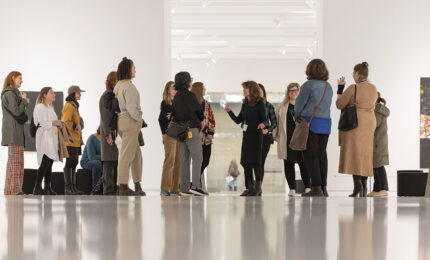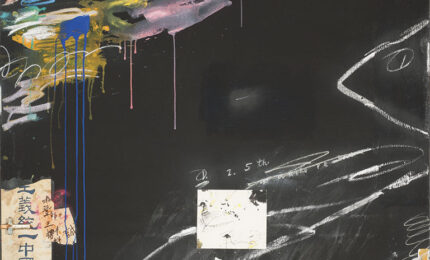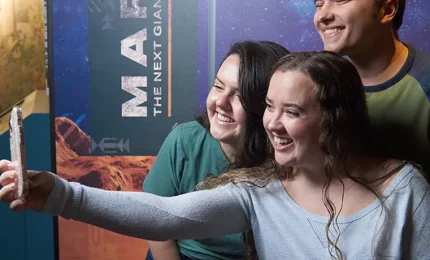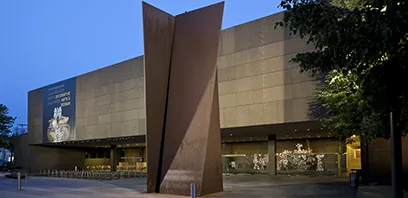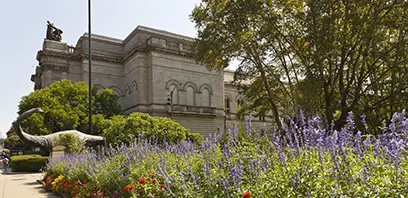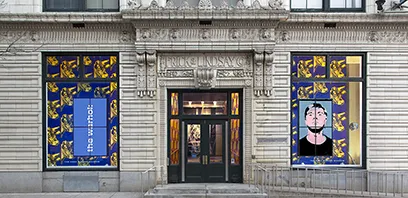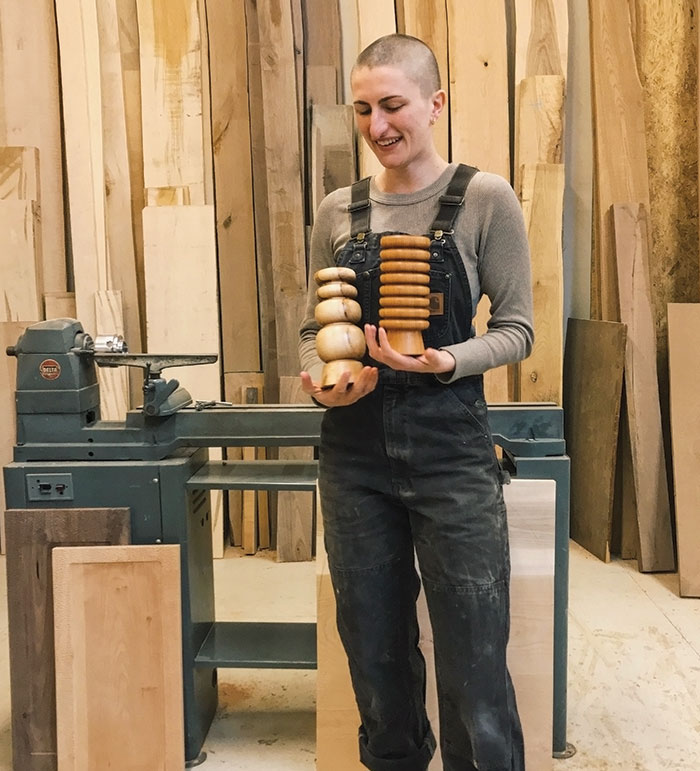
Photo: Hanna Dausch
Hanna Dausch has woodworking in her DNA. Her late grandfather was a woodworker, and his bowls, vases, and signs graced her childhood home. Her late grandmother painted furniture and her father refinishes it. But when she enrolled at the School of the Art Institute of Chicago, she went in planning to study ceramics—until she wandered into the woodworking studio. The 24-year-old, who handcrafts elegant vases, mirrors, and small furniture, is one of 19 makers with work featured in Locally Sourced, now on view at Carnegie Museum of Art.
Q: What do you like about woodworking? Are there parallels with ceramics?
A: The lathe is like a pottery wheel, but it’s turned horizontal and you are carving away material. You start with a rough piece of wood and make something new out of it. It’s very challenging; wood is difficult to use because even after the tree is dead, it’s still constantly moving based on temperature. I like that woodworking is really honest with you though—it’s really good at telling you when you don’t do it right. If you mess up, that’s it. It throws your mistakes in your face.
Q: What’s your process?
A: I don’t like to sketch or preplan, which most people frown upon. I come up with an idea, try it out, and if it doesn’t work then I learned something. A lot of times mistakes happen, but that’s OK because those mistakes often lead me in another direction. For example, sometimes when I’m turning on the lathe I will slip and chip out a chunk of wood, but that forces me to change my design and try something new.
Q: What kind of woodworking have you done since college?
A: My first job out of college was as a historic carpenter in Chicago working on houses built in the early 1900s. I was the only female and the youngest, working with men primarily in their 40s and 50s. They were some of the nicest people to work with and I learned so much from them. I even got to work on some Frank Lloyd Wright houses, which was really cool! But I also had to work outside in the Chicago winter framing houses, and I thought to myself, “This is not fun at all,” and I came back to Pittsburgh.
Q: You make one-of-a-kind household items. How do you bring them to life?
A: I love hand carving; that’s my bread and butter. It’s so fun to do. A lot of people don’t like to do it because it beats up your hands and is very monotonous, but oddly enough I tend to like monotonous work—it gives you time to let your mind wander. I turn a piece on the lathe, hand carve it with tiny horizontal and vertical lines, and then put it back on the lathe and finish it.
Q: What inspires you?
A: Architecture, historic preservation, furniture, and interior design. My degree is in sculpture with a focus in woodworking, but I discovered my school had a graduate program in historic preservation and I took classes in that department for fun. I think it’s really hard nowadays to find good craftsmanship because everyone wants it as quickly and cheaply as possible. It’s really important to preserve historic homes and so disappointing when you watch TV shows that supposedly “remodel” these houses, but really they’re ripping them apart.
Q: Where do you do your work?
A: I rent space in a woodshop between East Liberty and Point Breeze. Sometimes I wish I hadn’t chosen a profession that requires so much space and large machinery, but hopefully one day I’ll have a woodshop of my own.
Q: Where can people find your creations?
A: My work is on my website and in various shops around the city and country.
Q: And now at the Museum of Art?
A: Yes, I’m so excited about it; I made vases for the exhibition.
I cannot rave enough about the maker scene in Pittsburgh. It’s phenomenal because it’s very community based. I love Chicago, but in a bigger city such as Chicago, Los Angeles, New York, it’s very competitive because there’s so many of you fighting for similar things. Whereas in Pittsburgh, the maker community is so tight-knit that everyone wants to support each other.
Q: How has the pandemic changed your business?
A: I had to put more of a focus on my website and force myself to be more creative. For example, two friends—a ceramicist and printmaker—and I made a little sidewalk market outside of one of their houses in Shadyside. We advertised it on social media and with flyers around the city. It was a great experience to be able to interact with people and see how supportive the community is of small businesses. With everything going on in the world right now, no one wants to see another small business have to close. It’s very stressful, but working is my escape. When I go to the woodshop, I’m only thinking about my work, and that’s what makes me happy.
